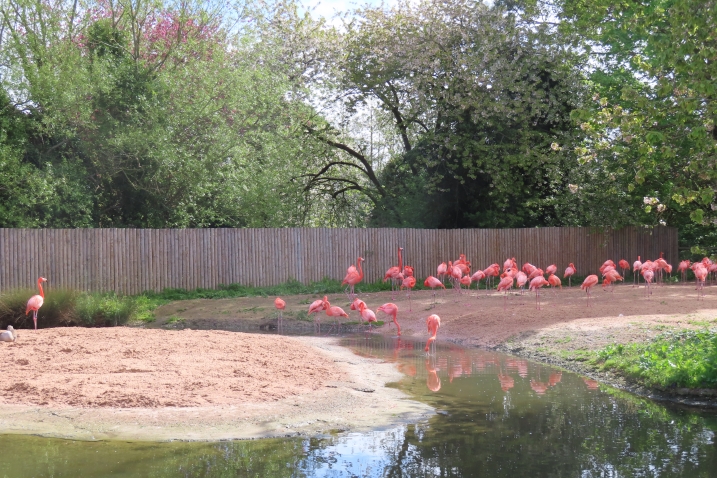Pink birds Down Under and an August update
It's been a few weeks since my last flamingo diary post as I attended an international behavioural ecology conference in deepest, darkest Queensland, Australia. I was very lucky to have received a "merit award" from the University of Exeter last year and so as I had never been to a global animal behaviour gathering before, I thought I would make good use of this to fly to Cairns and give a talk on my flamingo research.
There is only one flamingo left in Australia, at the Adelaide Zoo, so it might seem a strange place to travel to to talk about them. But whilst I am studying flamingo behaviour, they are simply the model animal (if you like) that I am using to answer my research question. So it is this question, about social networks and who does what with whom, that other people (regardless if they keep flamingos or not) would be interested in (hopefully!).
Closer to home, there were some interesting developments in the greater flamingo enclosure at the end of July. With chicks fledging the nests, becoming mobile and drawing their parents away from the nesting area, there was a resurgence of interest in the nest site from other flamingos in the flock. Lots of birds began head-flagging again and performing their group courtship display. There was also a great deal of marching, which is a relatively uncommon display behaviour in the greater flamingo (they do not do it as well as the smaller species) so this really showed how excited the birds were to continue on breeding. Eventually, as July progressed, this frenzy of activity turned into more nest building and even some egg laying.
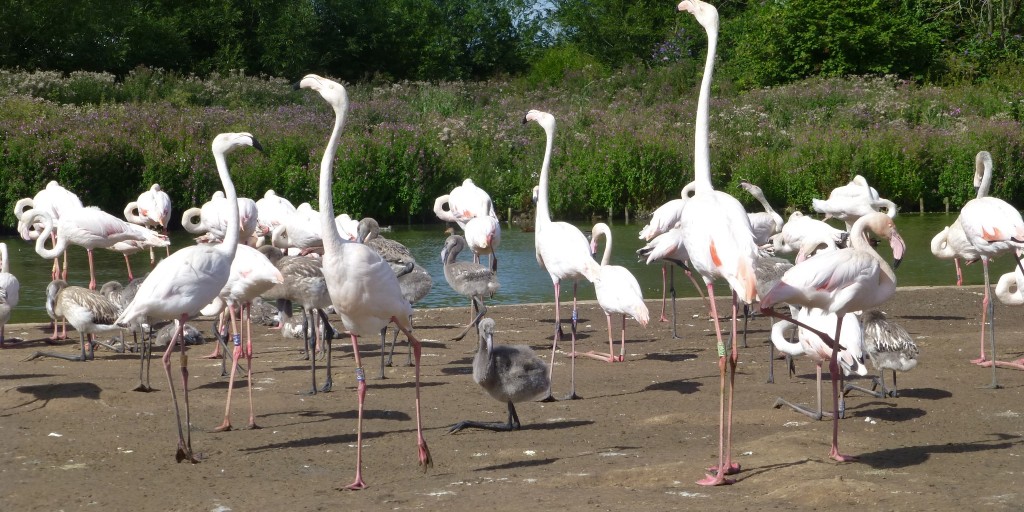
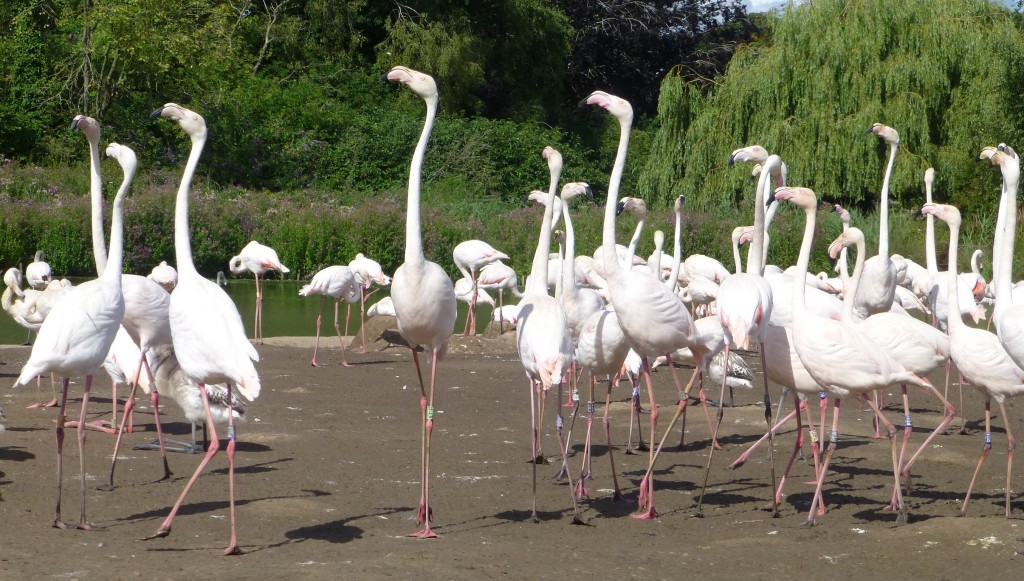
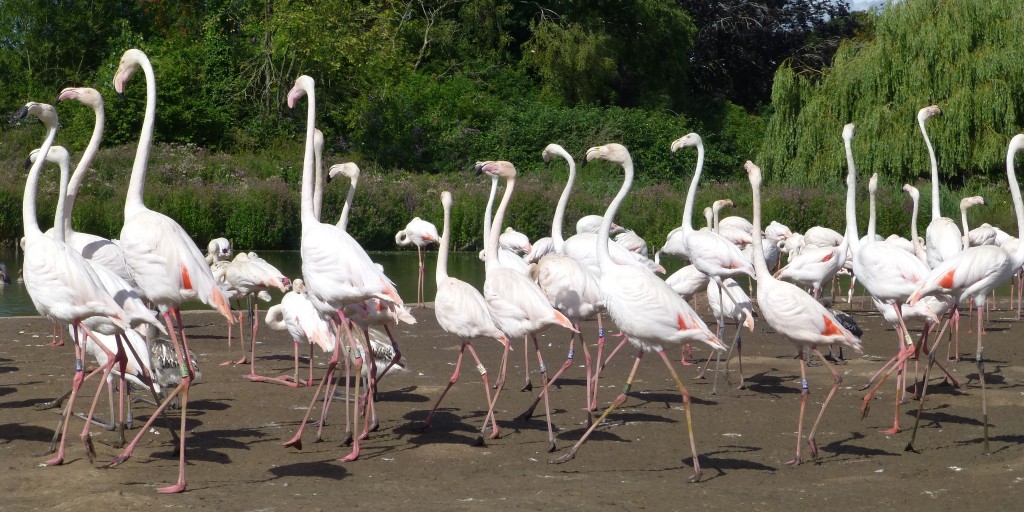
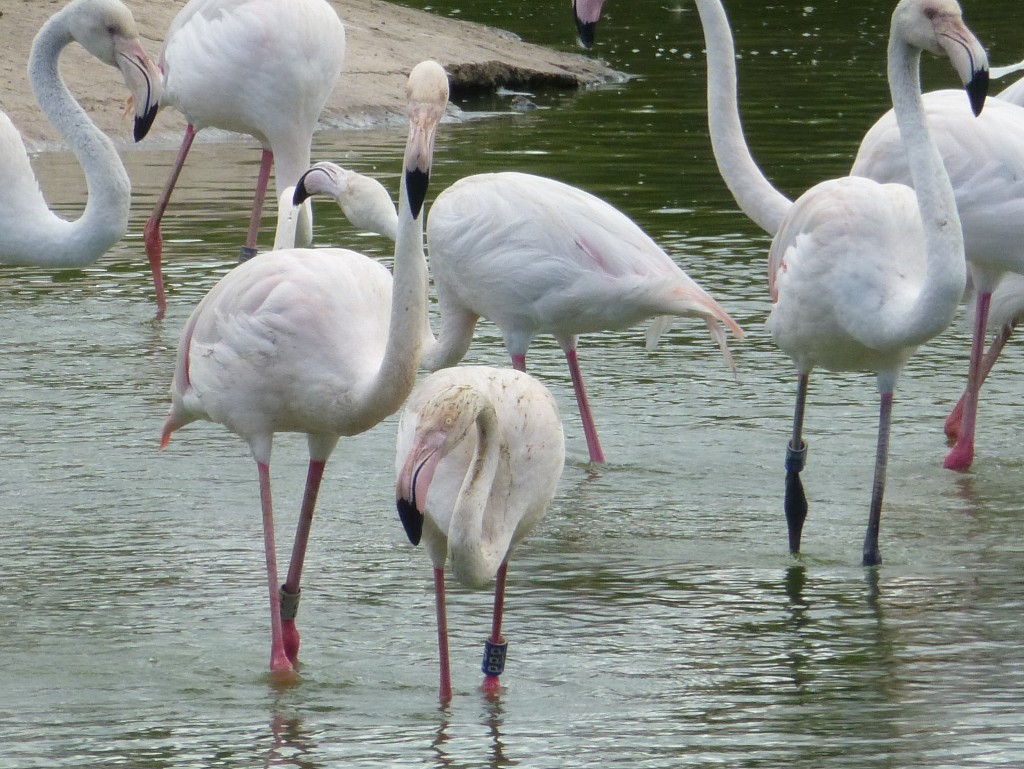
It is a little late in the day for the birds to start incubating and rearing a whole other batch of chicks before the autumn sets in, so these extra eggs were collected by avicultural warden Phil and sent up to the Duckery. Here they will be artificially incubated and distributed to other zoological collections that were looking to obtain more birds for their own flocks.
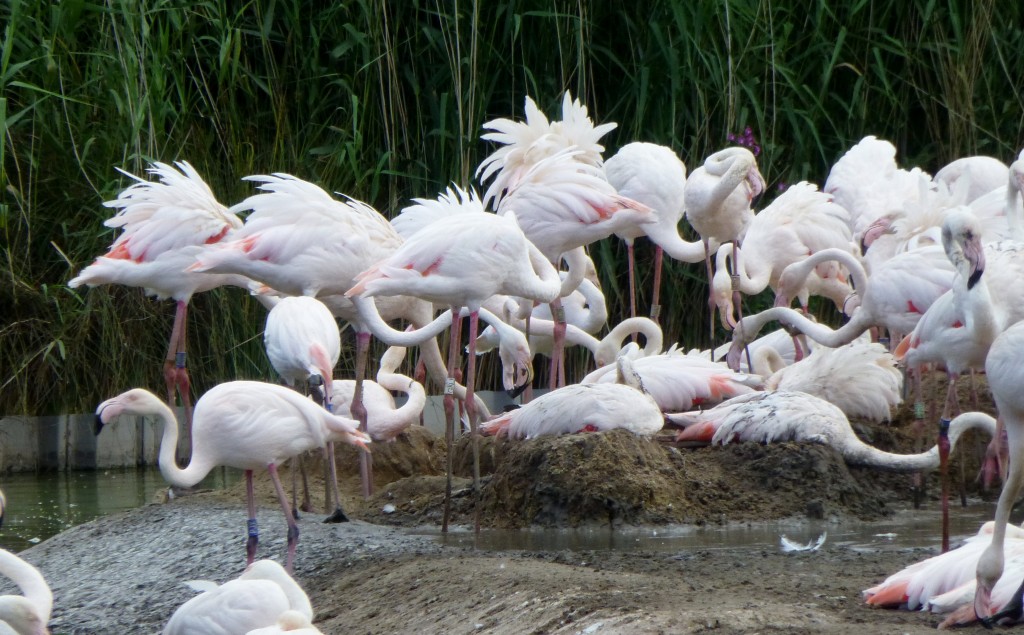
Such a mass second breeding attempt is pretty unprecedented in captivity and it shows that the birds are really at home in "Flamingo Lagoon". Work conducted by scientists at WWT Slimbridge in the 1990s showed that there is a critical number of birds that is needed for successful breeding. This work has been shared amongst collections that keep flamingos to encourage them to build up their flock sizes. The fact that this large flock of greater flamingos in this large enclosure have tried to breed again in the same year shows us the importance of a natural social environment to the hatching of many new flamingo chicks.
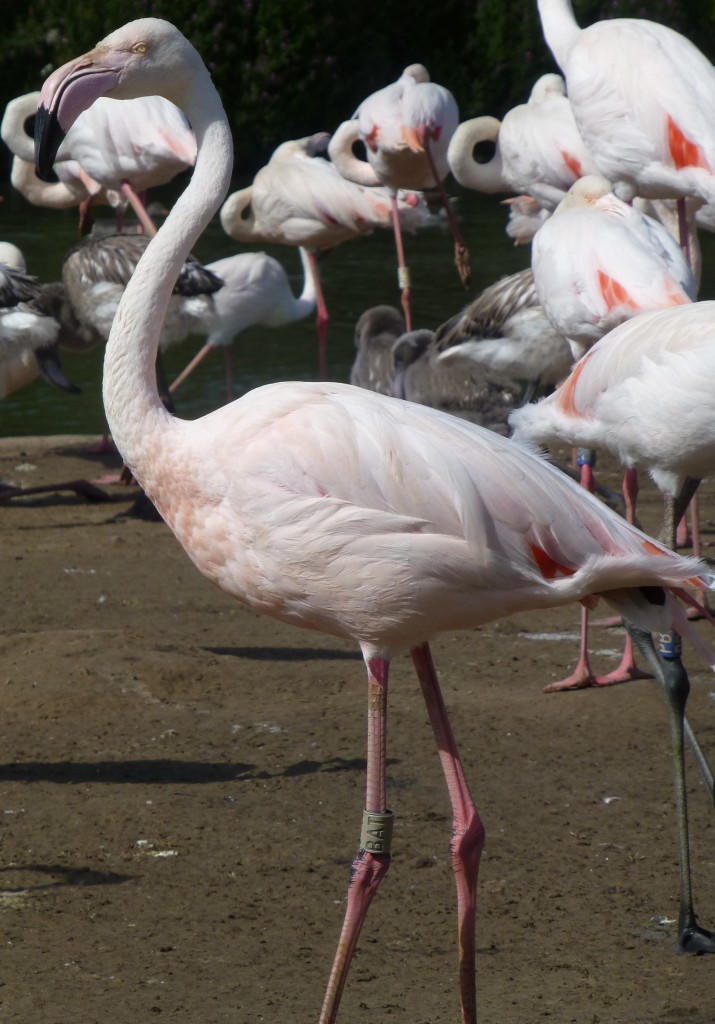
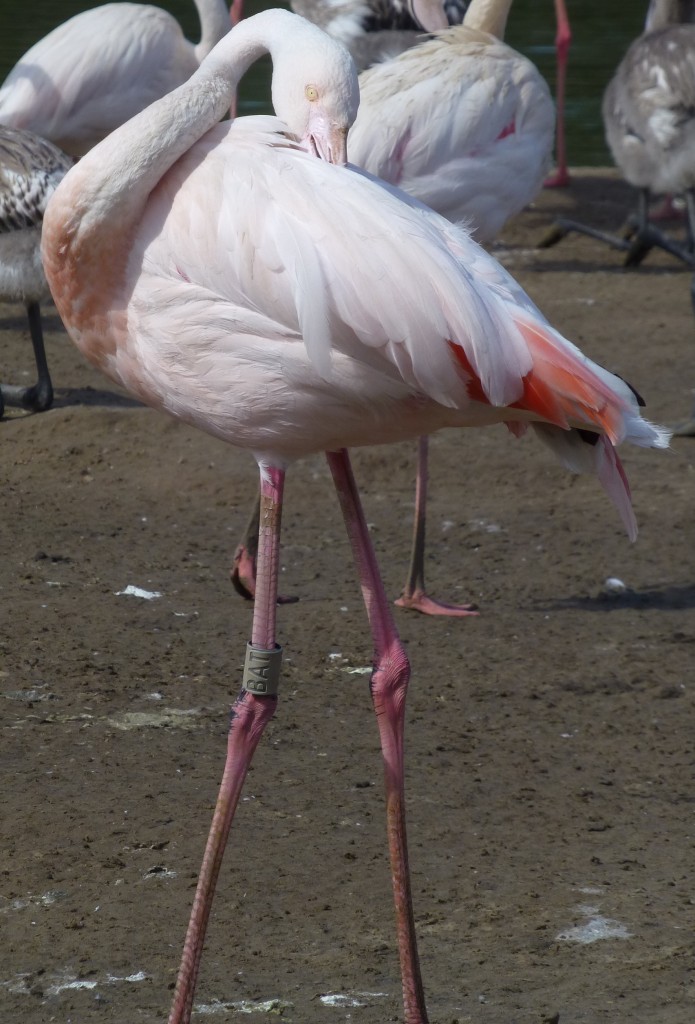
The enclosure size and number of birds certainly helps matters, and the weather was also on the flamingo's side. A nice warm Easter set the flamingos off nest building as normal, and the hot weather in June and July meant that birds did not go into moult after displaying. They carried on looking beautiful to try and attract a partner as this warm weather told them there were still good enough conditions for nesting.
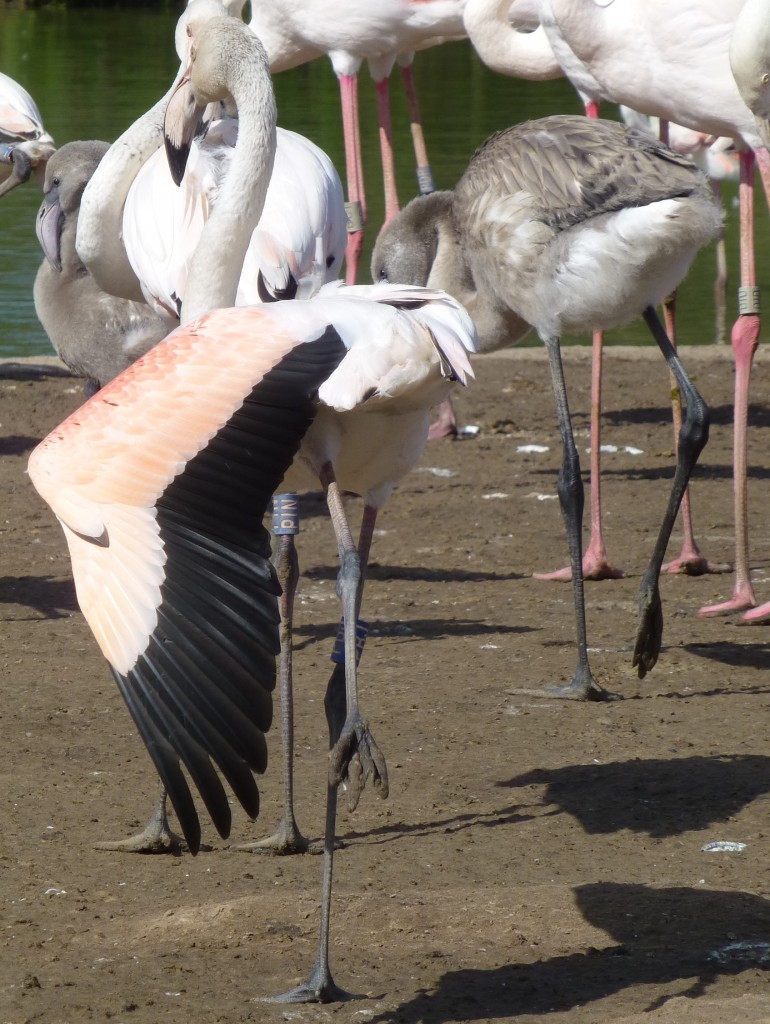
Now that we are approaching the end of August, the head flagging and breeding behaviour has died down, so you will need to wait until the end of winter for that to happen again with gusto. What we can say most certainly though is that WWT Slimbridge is home to a very happy flock of greater flamingos!
